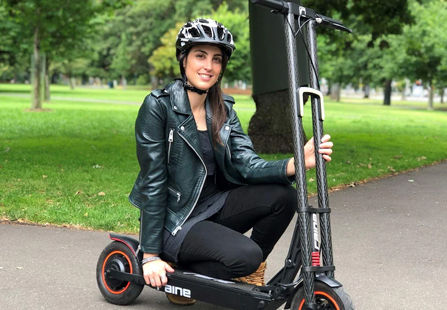Every single year, around 40 cyclists die on roads in western countries. And with more cyclists on the roads than ever, there’s a risk that number could rise.
COVID fundamentally changed the way we get around. Cars now share the road with more delivery riders, commuters, and bike clubs than ever before.
In some cities alone, it’s estimated that the popularity of riding soared by 270% following the onset of the pandemic. But as the number of cyclists increased, so do the troubling statistics.
Because most road infrastructure is still intended for cars, cyclists can often be put in harm’s way. In the months between September and November 2020, one food delivery rider was killed every 11 days in Australia.
But it doesn’t need to be this way.
Living in a technology-driven society, many scientists regard 5G isn’t exclusively limited to smartphones, tablets, and laptops. With the right tech, we can use it to keep riders safe, too by building a connected bike helmet full of safety gear.
The scientist is in the way to creating a connected bike helmet prototype that is 5G-enabled for our most vulnerable road users.
Theoretically, the helmet prototype features a 5G connection, which passes video, GPS, and other data up to a data processing and analytics cloud, thus gathering data from connected cars on the roads.
The 5G network – will cover most of the population and carry huge amounts of data at incredible speeds, making near real-time communication for vehicle safety possible.
The bike helmet prototype gathers a range of data, and meshes it together with data gleaned from connected cars around the rider, and connected infrastructure and road cameras around the city.
This information will then feed to a rider through a speaker in the helmet to provide real-time safety information, alerts, and warnings.
It’s more than just giving cyclists eyes in the back of their head: it’s giving them the ability to see around corners where traffic is at a standstill, and even helps them predict the future.
One of the greatest concerns any rider has is being “doored”: where a driver or passenger opens their car door into a bike lane, causing a full-speed collision with a cyclist if not careful. Car doors swinging open can force a rider out of their lane and into the path of another vehicle, where they might not be so lucky.
When a driver or passenger opens their door, real-time video from the bike helmet will be sent over 5G and analyzed in a cloud platform, where the opening car door hazard is identified. The platform then pushes down an audio alert to the rider to react in time, thanks to the super low-latency connectivity offered by our 5G network.
As more and more people take to alternative means of transportation to tackle city congestion, climate change, and general fitness, we have to use every piece of technology we can to keep them safe for the future. With the help of high-tech, we may soon create a road that frees us from accidents.






